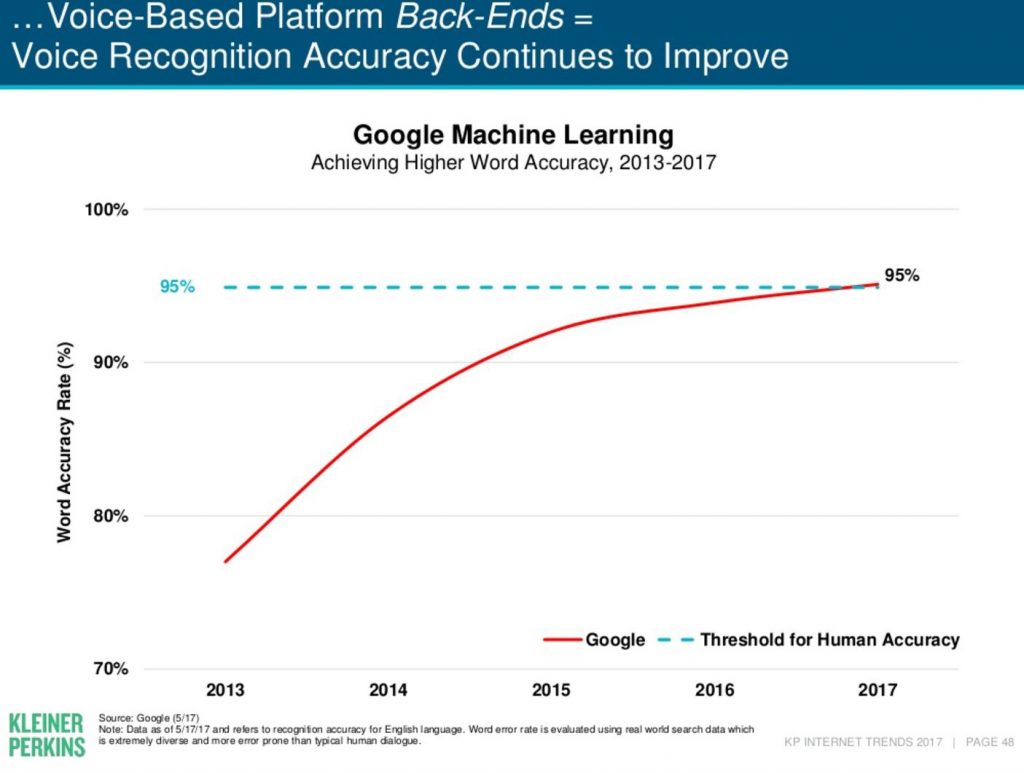
Voice-activated technologies continue to shape the auto experience thanks to Amazon, Apple, and Google. Being an effective dealer increasingly means understanding Amazon Alexa, Apple CarPlay, and Google Android Auto as consumers – and their vehicles – become more connected.
Major Developments in 2017
In 2017, we’ve seen a number of significant developments in the uptake of voice-activated technologies that promise to make automobiles smarter and more useful:
- In January, Ford announced that its cars will fully integrate Amazon’s Alexa voice technology to an extent never seen in the auto industry. With Alexa, Ford models will be able to perform a wide range of actions such as manage smart home functions and order products from Amazon while on the go.
- In March, Porsche and Honda announced new sports cars that will use Apple’s CarPlay technology, which relies largely on voice to turn cars into infotainment centers through an interface with owners’ Apple devices. In June, car stereo maker Alpine unveiled an aftermarket receiver that enables the use of CarPlay wirelessly. This news is noteworthy because with an aftermarket receiver, consumers can integrate CarPlay into vehicles they own rather than need to wait to buy a new car. Embedding CarPlay into an aftermarket product may thus increase the adoption of voice assistant.
- In May, Google enjoyed some news of its own. Audi and Volvo said they would use Google’s Android Auto voice-based operating system for their own infotainment centers. And it was reported that Waze, the popular mobile navigation app, will integrate with Android Auto so that Waze users can report traffic conditions to each other in real time using their voices.
And as voice-recognition technology continues to improve, we can expect voice to become an even more natural part of our lifestyles, as noted in the 2017 Internet Trends Report from Mary Meeker of Kleiner Perkins:

The Big Three Dominate
The voice activated driving experience is hardly a new phenomenon. In 2012, Apple announced an extensive integration of its Siri voice interface with automobile manufacturers in order to make it possible for drivers to perform tasks such as searching for local destinations in hands-free fashion while driving. Since then, as voice recognition technology has improved, major brands, most notably Amazon, have rolled out their own competitors to Apple Siri, which has helped accelerate the uptake of smarter cars. We now see the emergence of a triumvirate of players:
- Amazon’s Alexa underpins the Amazon Echo, which makes it possible for consumers to do everything from ordering a pizza to controlling the heat in their homes. Alexa-based products are expected to dominate 70 percent of the market by the end of 2017. Ford announcing a more extensive application of Alexa was a landmark moment because no one had seen such a fully integrated use of voice technology in an automobile. Select Ford models will feature capabilities ranging from starting your auto from your home to turning off your porch lights from your auto by simply talking to your car.
- Apple, as noted, is a voice technology pioneer. CarPlay transforms users’ iPhones into an automotive utility on the go largely through a voice interface. With CarPlay, the automobile taps into one’s iPhone to perform all the tasks people normally perform on their mobile devices. Searching for a restaurant through Apple Maps or listening to a music playlist stored on an iPhone becomes a seamless, voice activated experience behind the wheel. Apple says that more than 200 auto models use CarPlay, which is not surprising given that more than 1 billion Apple devices are being used around the world. Recently Apple improved CarPlay by making it wireless (via the BMW 2017 5 Series). A more extensive rollout of wireless CarPlay is on the horizon.
- Google has emerged as major player as well through Android Auto, which is like CarPlay for owners of Android devices. Like CarPlay, Android Auto offers a slew of features such as support for complicated searches relying on maps applications. Google continues to modify Android Auto in a number of ways. For instance, Google recently announced that car drivers can use Android Auto to communicate via the Google Allo messaging platform by having Android Auto share Allo messages aloud. As noted on the Android Auto website, a number of major brands ranging from Subaru to Volvo support Android Auto. Like Apple, Google is banking on a large installed user base to fuel the uptake of Android Auto. According to Google, there are more than 1.4 billion active Android devices worldwide.
Auto dealers should expect the voice-activated experience to become more sophisticated, with connected cars integrating voice, gesture, augmented reality, and artificial intelligence to eclipse the capabilities that we consider state of the market today. Auto dealerships need to speak knowledgeably about the evolution of the voice-based driving experience in order to be relevant to car buyers. I recommend that auto dealerships stay on top of changing technology by following publications such as Cars.com and TechCrunch and continuously educating your sales force so that you can be prepared to address your customers’ questions as they follow the same sources. This need is especially acute to be responsive to early adopter customers who tend to do extensive research on automobiles and are willing to spend the money to upgrade to a better experience. How are you responding to advances in voice?



